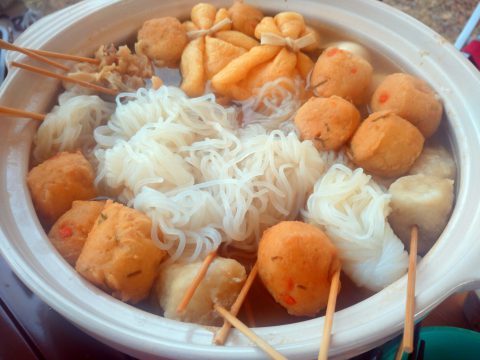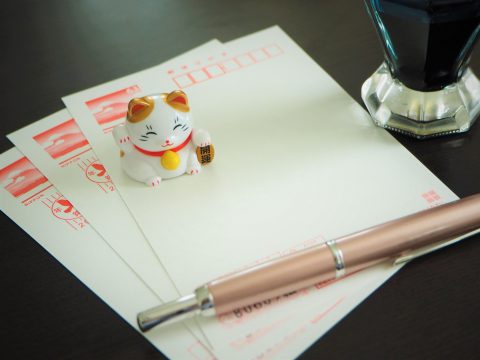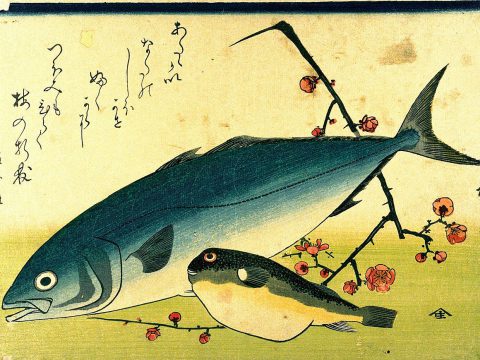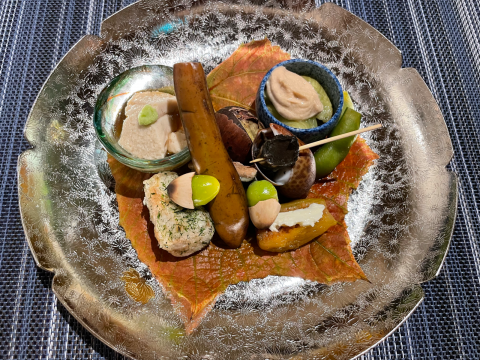Torisashi(鳥刺し)Chicken Sashimi
JAPANESE FOODS
17.09.2022
Torisashi (鳥刺し) is chicken sashimi. It’s a regional delicacy of Kagoshima and Miyazaki prefectures in Kyushu (southern Japan). The chicken for torisashi is no ordinary chicken; restaurants source the freshest and high-quality meat that’s then properly slaughtered and stored to avoid bacterial contamination.
Interestingly, you will see supermarkets selling torisashi in the chicken meat aisle in Kagoshima and Miyazaki prefectures. It’s part of the local food culture that’s been eaten since the Edo period (1603-1867).

Types of Torisashi
Like sashimi, torisashi is sliced thinly and dipped in soy sauce. Some are lightly seared or boiled for texture contrast. It’s eaten with aromatics such as grated ginger, garlic, or yuzu kosho (yuzu chili paste) for a punch of flavor.
As there are many edible parts of the chicken, you can imagine the different offerings of torisashi. Here are some you may encounter:
- Gizzards: dark red, it has a slightly crunchy texture
- Hearts: has the least fat content
- Liver: creamy and eaten with salt and sesame oil
- Breast and thigh meat: the most common form, has a fibrous texture
- Toriwasa (鳥わさ) or tataki (たたき): meat that is lightly seared outside, but still pink inside

Where to Find Torisashi
You can find torisashi specialty restaurants in Kagoshima and Miyazaki prefectures, but elsewhere as well. Some yakitori (grilled chicken) restaurants may offer it on the menu.

Risks of Torisashi
Raw chicken meat is often infected with campylobacter and salmonella. These nasty bacteria can give you food poisoning and cause diarrhea, nausea, and belly cramps. In the most severe cases, it may require hospitalization. These bacteria are usually lurking in the digestive organs, so a well-skilled chef would be able to break down the chicken without contaminating the meat.
So as you can imagine, never make torisashi at home, and make sure you order torisashi from a reputable restaurant.
To preserve this food culture, the Torisashi Association has imposed strict rules and regulations on handling raw chicken in restaurants serving torisashi. These measures include separating the knives and cutting boards for torisashi purposes, safely storing the meat before serving, and biannual testing.
It’s a unique local specialty that does impose some risks but may be interesting to try if you’re in the area. It’s a different experience than eating fish sashimi.
Note: If you have a compromised immune system, you should avoid raw chicken, along with all raw foods such as meat, eggs, and fish.
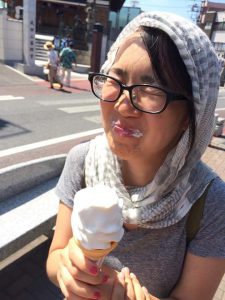
Kayoko Hirata Paku
Kayoko Hirata Paku is a food writer, translator, and bagel person. Growing up in Japan and the U.S., she currently resides in Tokyo with her peanut butter addicted husband, a very hungry baby, and many half-dead plants.
Read previous articles by the writer
Read latest articles
KEYWORDS
- # PICKPICK
- # Resume
- # alcohol
- # Rice
- # Soup
- # winter food
- # Fast Food
- # seafood
- # spicy foods
- # raw food
- # fermented food
- # Transportation
- # MEAT
- # Edo culture
- # suits
- # clothing
- # drink
- # fish
- # seasoning
- # Japanese New Years Foods
- # Toshikoshi soba
- # Osechi Ryori
- # Ozoni
- # Christmas
- # Japanese fusion pasta
- # Wafu Pasta
- # Japanese Hot Pot
- # なべ
- # 鍋
- # Miyazaki
- # Chicken Nanban
- # Karamen
- # Autumn Wagashi
- # Mushi-yokan
- # Imo-yokan
- # Japanese Autumn Fruits
- # Autumn
- # Vending Machine
- # fall
- # dango
- # Chestnut rice
- # saury
- # Mushroom
- # Rice vinegar
- # Japanese condiments
- # 調味料
- # Sake
- # Mirin
- # Soy sauce
- # Japanese Noodles
- # Udon
- # Ramen
- # Yakisoba
- # Soba
- # Japanese Seaweed
- # 海藻
- # かいそう
- # Payslip
- # Training
- # Japanese summer foods
- # 和菓子
- # Wagashi
- # ryokucha
- # 夏
- # 飲み物
- # Ramune
- # ラムネ
- # Pokari Sweat
- # ポカリスエット
- # Calpis
- # カルピス
- # Mugicha
- # ume
- # 梅
- # うめ
- # umeshu
- # job hunting
- # tofu
- # Recruitment in Japan
- # miso
- # Japanese cuisine
- # Yellowtail and bonito
- # Children’s Day
- # Kashiwa Mochi
- # Chimaki
- # fruits
- # Kusamochi
- # Types of Agriculture in Japan
- # bread
- # パン
- # パン屋さん
- # japanese bread
- # shokupan
- # meal blead
- # anko bread
- # 桜
- # さくら
- # cherry blossom
- # visa
- # hanami
- # omotenashi
- # sakura
- # おもてなし
- # Japanese hospitality
- # oshibori
- # wet hand towel
- # hand towel
- # restaurant
- # Commuting in Japan
- # Women-only cars
- # Exit gate
- # japanese train
- # train
- # valentine
- # Japanese sweets
- # 朝食
- # Japanese Breakfast
- # Breakfast
- # Japanese
- # 日本
- # healthy
- # persimmons
- # hoshigaki
- # HR
- # work in Japan
- # jinji ido
- # corporate systems
- # Japanese work culture
- # bento
- # ekiben
- # shinkansen
- # omiyage
- # train station
- # Japanese culture
- # work culture
- # mentaiko
- # umeboshi
- # Japanese snacks
- # potato chips
- # Japanese potato chips
- # Japanese writing
- # seaweed
- # konbu
- # ocean foods
- # shio konbu
- # dashi
- # miso soup
- # food processing
- # pear
- # nashi
- # sweet potato
- # japanese sweet potato
- # stingray
- # satsuma imo
- # food value chain
- # homecooking
- # agriculture
- # Japanese homecooking
- # farming
- # nikujaga
- # shojin ryori
- # meat and potatoes
- # traditional foods
- # comfort food
- # buddhist food
- # manufacturing
- # factory
- # eihire
- # vegetarian
- # food and beverage
- # izakaya
- # yatai
- # japanese festival
- # taiyaki
- # matsuri
- # summer
- # Ikayaki
- # smart agriculture
- # shaved ice
- # kakigori
- # かき氷
- # summer dessert
- # Japan
- # Japanese foods
- # dessert
- # fruit
- # matcha
- # icecream
- # Pikcup
- # Pikc up
- # Pcikup
- # skilled labor visa
- # working visa japan
- # Dineer Table in Japan
- # Japanese manner
- # Japanese food
- # Japanese Table Manner
- # Chopsticks
- # Japanese traffic signs
- # traffic information
- # road rules in Japan
- # chocolate
- # green tea
- # Osaka
- # Work Japan
- # Japanese company
- # ikura
- # sushi
- # nigiri
- # wasabi
- # PCIK
- # PICK UP
- # PICK
- # PICKUP


